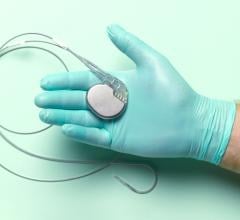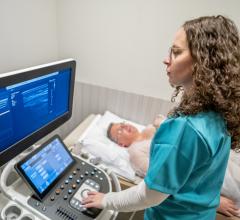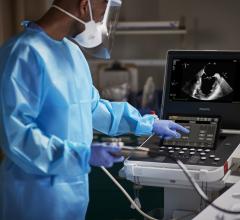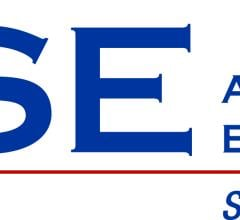
The provision of echocardiographic services remains crucial during the novel coronavirus (COVID-19, SARS-CoV-2) outbreak. To minimizing risks to cardiac ultrasound staff, The American Society of Echocardiography (ASE) commissioned a group of experts to a statement outlining recommendations to improve safety and reduce the potential for COVID-19 cross contamination.
The ASE Executive Committee approved the statement March 17, 2020, and it has undergone three revisions since then with additional information.
The statement addresses triaging and decision pathways for handling echocardiographic requests, as well as indications and recommended procedures to be followed for an echocardiographic assessment of cardiovascular function in suspected or confirmed COVID-19 cases. In addition, the document lists measures recommended to be used in the echo lab for prevention of spread of disease.
The authors wrote carefully consideration should be given to who should be imaged, where to image and how to image, since these three questions have the potential to reduce the risks of viral transmission.
Cardiovascular disease is the comorbidity that has the highest death rate in COVID-19 patients, at about 10.5 percent. For this reason, risk of cardiovascular complications in the setting of COVID-19, including pre-existing cardiac disease, acute cardiac injury and drug-related myocardial damage, will require the use of echocardiography in the care of some patients with suspected or confirmed COVID-19. The authors wrote this will place cardiovascular ultrasound providers in the front lines of COVID-19 patient care.
"We are at high risk, particularly when we participate in the care of patients who are suspected or confirmed to have highly contagious diseases," authors of the statement wrote. "While dedication to patient care is at the heart of our profession, we also have a duty to care for ourselves and our loved ones and to protect all of our patients by preventing the spread of disease."
The statement says this requires judicious use of personal protective equipment (PPE), following best practices, pre-planning and exams and throughly sterilizing equipment after each exam.
Postponing Elective Echo Exams During the Pandemic
The Centers for Medicare and Medicaid Services (CMS) in March called for all elective procedures to be postponed. This was designed to preserve PPE, drugs and equipment needed for the possible surge of COVID-19 cases. It was also designed to help limit the spread of the disease among vulnerable patients and among hospital staff.
The ASE statement said there are two ways to identify these studies:
• Determine which studies are “elective” and reschedule them, performing all others.
• Identify “non-elective” (urgent/emergent) indications and to defer all others.
In cases considered for deferral, there is no significant risk to patients in terms of morbidity or mortality and no expected benefit in terms of avoiding the use of medical resources (such as emergency department visits or hospitalizations). These tests should be postponed.
TEE Carries Increased Contamination Risks in COVID-19 Patients
The use of transesophageal echo (TEE) should carries a heightened risk of spread of the COVID-19, because it can promote the aerosolization of a large amount of virus due to coughing or gagging that may result during these exams.
The ASE statement calls for cautious consideration of the benefit of a TEE exam should be weighed against the risk of exposure of healthcare personnel to aerosolized virus in a patient with suspected or confirmed COVID-19. These exams also require use of higher level PPE. ASE said TEEs should be postponed or canceled if an alternative imaging modality can be used, including off-axis transthoracic echo (TTE) views, ultrasound enhancing agent with TTE, or use of contrast enhanced computed tomography (CT) and magnetic resonance imaging (MRI). CT and MRI have emerged as an alternative to TEE for exclusion of left atrial appendage thrombus prior to cardioversion, for example, the authors state.
Use of TTE, CT or MRI to Avoid TEE
The use of alternative tests to avoid an aerosolizing procedure should be balanced against the risk of transporting a patient through the hospital to the CT or MRI scanner, the need to disinfect the CT or MRI room, and iodinated contrast and radiation for CT, or long scan times for MRI. The authors stated some institutions have a dedicated CT scanner reserved for patients with COVID-19.
The portability of echocardiography affords a clear advantage in imaging patients without having to move them and risk virus transmission in the clinic or hospital, according to the statement. All forms of echocardiography (including pharmacological stress tests) can be performed in emergency departments, hospital wards, intensive care units (ICU), operating theaters, recovery areas, cath labs and electrophysiology labs, in addition to echocardiography labs.
Echo Exams Need to be Planned Before Imaging the Patient
Echocardiographic studies performed on patients with suspected or confirmed COVID-19 should be as focused as necessary to obtain diagnostic views, but should also be comprehensive enough to avoid the need to return for additional images. Each study should be tailored to the indication and planned in advance, after review of images from past exams and other imaging modalities, the authors wrote.
Plans for ultrasound enhancing agent (UEA) utilization should be made in advance in order to prevent a sonographer having to wait for the agent to be delivered, or having to use more personal protective equipment to exit the patient’s room to obtain the agent
Regardless of the type of study (UAPE, POCUS, CCE or comprehensive echo), prolonged
scanning can expose these clinicians to added risk. An additional consideration when performing a limited transthoracic echo exam is the limitations that may be posed by layers of protective equipment on image quality. For this reason, the authors said these studies should not be performed by a sonography student or any other novice, inexperienced practitioner, in order to minimize scanning time while obtaining images of the highest possible quality.
PPE, Hand Washing, and Patient Risk Assessment in COVID-19
Meticulous and frequent hand washing is crucial. In some institutions, the level of PPE required may depend on the risk level of the patient with regard to COVID-19:
• Minimal risk = COVID-19 not suspected
• Moderate risk = COVID-19 suspected
• High risk = COVID-19 confirmed
In some institutions, suspected and confirmed cases are treated similarly. The types of PPE can be divided into levels or categories:
• Standard care involves hand washing or hand sanitization and use of gloves. The use of a surgical face mask in this setting may also be considered.
• Droplet precautions include gown, gloves, headcover, facemask and eye shield.
• Airborne precautions add special masks (e.g. N-95 or N-99 respirator masks, or powered air purifying respirator - PAPR systems), and shoe covers.
Use of Dedicated Ultrasound Machines, Compact Units and Disposable Covers
Equipment care is critical in the prevention of transmission. Some institutions cover probes and machine consoles with disposable plastic and forego the use of ECG stickers. It is important to note that the benefit of using protective covers must be balanced against the risk of potential for suboptimal images and prolongation of scan time. Some institutions set aside certain machines or probes for use on patients with suspected or confirmed infection. Although SARS-CoV-2 is sensitive to most standard viricidal disinfectant solutions, care must be taken when cleaning, according to the statement.
Local standards vary, but echocardiogram machines and probes should be thoroughly cleaned, ideally in the patient’s room and again in the hallway. Smaller, laptop-sized portable machines are more easily cleaned, but use of these machines should be balanced against potential tradeoffs in image quality and functionality.
Limit Staff Involved in Scanning to Prevent COVID-19 Exposure
In addition to limiting the number of echocardiography practitioners involved in scanning, consideration should be given to limiting the exposure of staff who may be particularly susceptible to severe complications of COVID-19. Staff who are more than 60 years old, have chronic conditions, are immunocompromised or who are pregnant may wish to avoid contact with patients suspected or confirmed to have COVID-19, depending on local procedures, the statement reads.
Limit Staff Contamination Exposure
The risk of transmission also occurs in reading rooms. Keyboards, monitors, mice, chairs, phones, desktops, and door knobs should be frequently cleaned, and ventilation provided
wherever possible. In some institutions the echo lab reading room is a place where many clinical services congregate to review images.
In the current environment, the authors state it may be advisable to ask these services to review images remotely while speaking with the echocardiographer consultant by phone, or review images together via a teleconference.
The ASE statement was endorsed by the American College of Cardiology (ACC).
Reference:

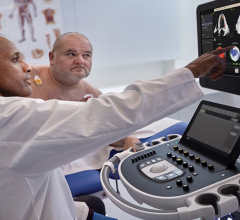
 June 12, 2024
June 12, 2024 

